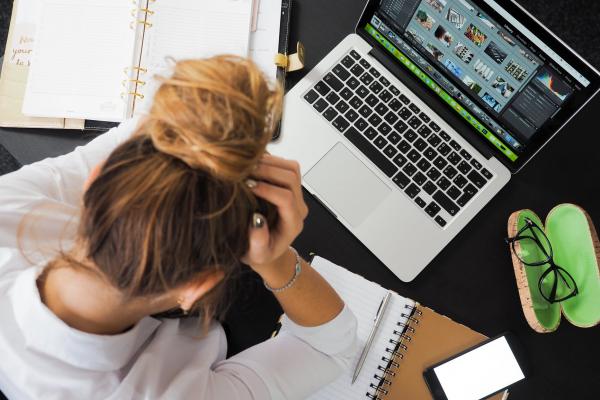Self-Injury
Carving or cutting your skin, banging your head against the wall or biting or burning yourself. This behaviour, by which you intentionally inflict direct damage to your body, is called self-injury.
I was screaming on the inside, but nothing came out.

Did you know this?
Self-injury or automutilation frequently finds its onset around the age of 14. However, higher education is also a sensitive period for the onset of such behaviours. Research found that 22% of Flemish students intentionally self-injure at least once a year. Approximately 10% indicate that they have self-injured in the past year. Self-injury occurs as often among females as among males. Girls mostly scar and scratch themselves, whereas boys tend to hit themselves or engage in head banging.
Why do young people injure themselves?
There is no single specific reason why young people self-injure. Typically, they do so to cope with overwhelming feelings and thoughts. For some, it is also a way to punish themselves or to communicate with the outside world that they aren’t feeling well.
The causes and events that lead to young people self-injuring also differ from one person to the next. This behaviour can arise from various situations, such as family problems, bullying, school stress or a traumatic event. Young people who self-injure are often very critical, perfectionistic and negative about themselves.
Unlike what some people think, young people do not self-injure with the intention to end their life. Self-injury is an expression of psychological pain, anger or sadness. It is a way to cope.
A (temporary) sense of control
In the short term
In the short term, self-injury has a direct effect. When damage is inflicted to the body and the self-injury ends, the body goes into survival mode, which causes a mixed release of endorphins and adrenaline. This generates a temporary reduction of difficult emotions.
In that moment, the pain of self-injury suppresses the emotional pain and negative thoughts, which gives a feeling of peace and control. However, this passes very quickly.
In the long term
In the longer term, self-injury leads to multiple negative feelings, such as guilt, being ashamed of the scars, feeling frustrated and rejected. There is also a risk of habituation. This means that someone has to self-injure more severely time and time again to get the same effect. It is possible that a form of addiction to the behaviour arises.
Fear but also shame for the behaviour and scars cause many young people to hide their self-injuries and keep them a secret. In more than half of the students who self-injure, no one is aware of the difficulties, which causes the students to feel very lonely.
Getting to know new people and talking about it was a turning point in my life.
An end to self-injury
Deciding to stop or reduce self-injury is a personal and often difficult decision. The online self-help programme STAR zooms in on different aspects of reducing or stopping self-injury. In 10 sessions, you learn to get a better grip on your self-injurious behaviour step by step and to cope with negative feelings in a positive way.
Talk about it
Are you struggling to cope and do you sometimes hurt yourself? Or do you think about it often? Have a conversation with someone you feel comfortable with and trust, like a good friend, your parents, sister or brother. This can bring relief and help you sort things out. You can also find help together.
If you don’t immediately have the courage to tell someone in your direct surroundings, then try to approach someone who is familiar with similar experiences, such as a GP or a student counsellor at your college or university.

Would you prefer to share your story anonymously? You can always call on Awel (102 or awel.be) or Tele-Onthaal (106 or tele-onthaal.be). If you have suicidal thoughts or questions about suicide, contact the Suicide Hotline (1813 or zelfmoord1813.be). Talking helps.
Seek help
If you notice that you aren’t making any progress, it is important to get professional help. There are mental health professionals who have specialised in these issues.
During the treatment, you will learn how to cope with negative feelings, you will learn stress management techniques, and think about alternative ways to release and express extreme emotions. Together with the mental health professional, you will also look into the reason(s) why you self-injure. In this way, you can find solutions together.
Under your skin: students and experts sharing their experiences
Host Carola talks to Shana and professor Imke Baetens (VUB) about self-injurious behavior and emotional problems. Professor Baetens is a specialist in the field and specifically focuses on children and adolescents.
Worried about a friend?
Have you discovered that a friend carves themselves or self-injures in another way? It is often difficult to know what to say, if and when you should seek external or professional help, and how you can support this person. It is important that you have a conversation about this.
Keen to learn, read or hear more about this topic?
Podcasts
Self-help
Websites
-
zelfverwonding.be: here professor Imke Baetens collects relevant information on the topic. (Dutch)
-
ICSES (International Consortium of Self-Injury in Educational Settings): here you can find more information and scientific research on self-injury
Powerful stories
You are not alone. Get inspired by other students' stories about vulnerability and doubt. But above all about the power of connectedness.
Go to the stories